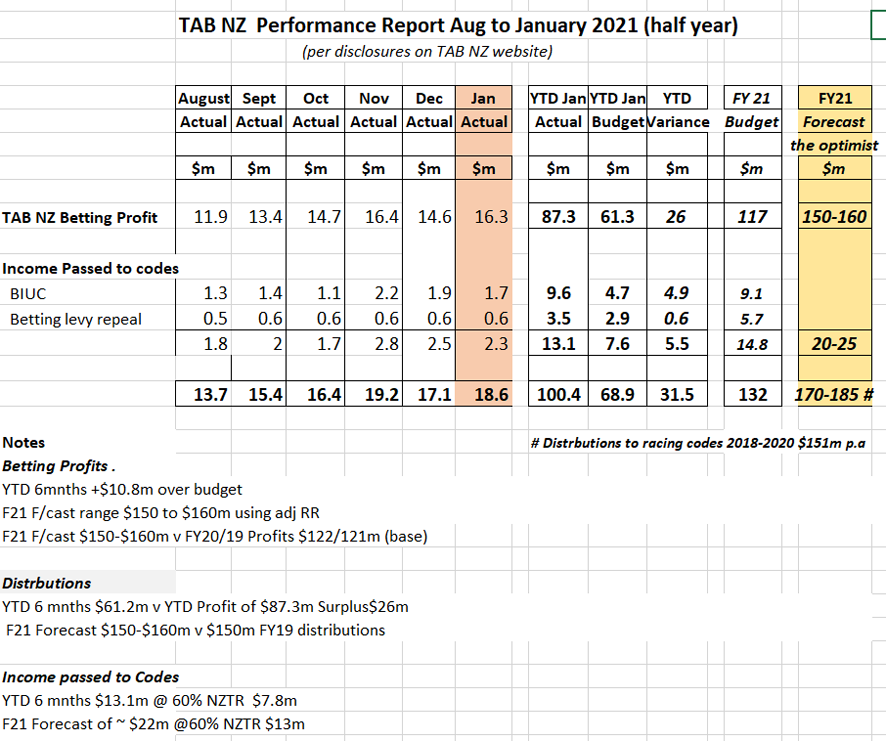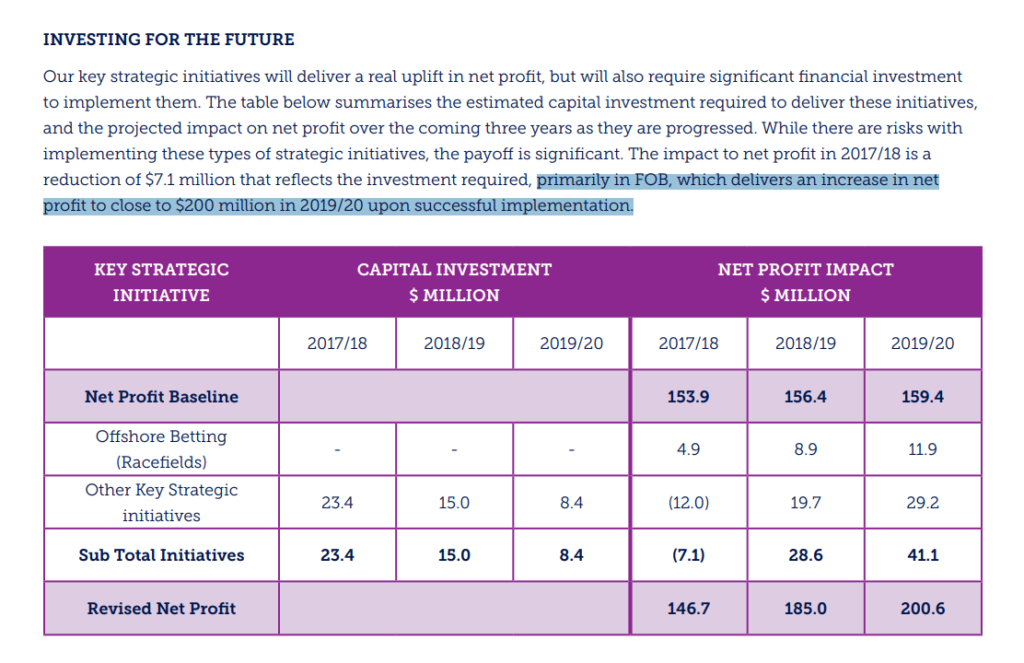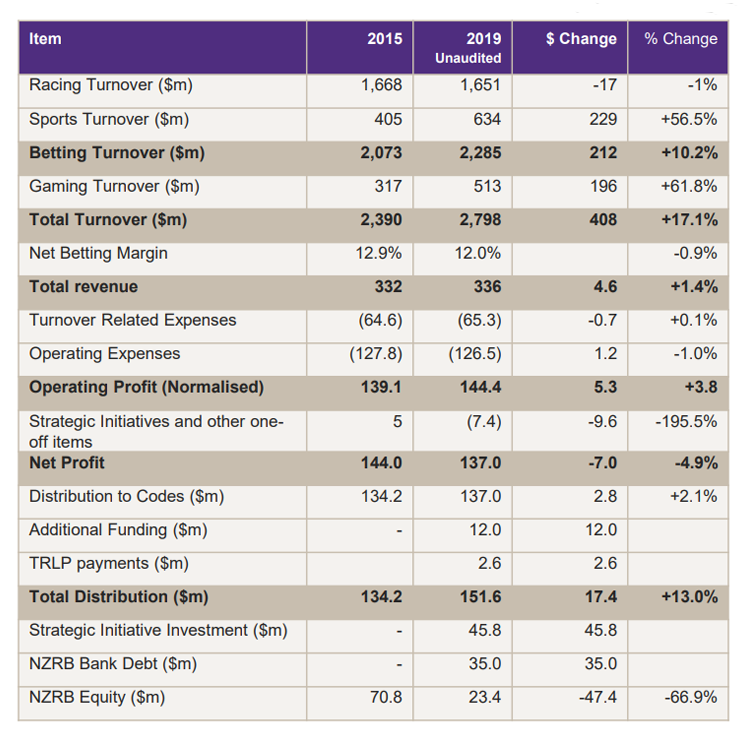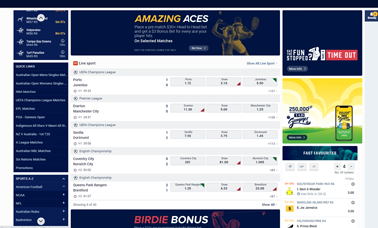by Brian de Lore
Published 25th February 2021
The woes of the racing industry in New Zealand can only be fixed by one thing – stakes money!
Stakes money is what drives the racing business and determines its state of health. But New Zealand racing isn’t driving anywhere, and if presented for a warrant of fitness today, it would get a FAIL with defect notices citing a blown head gasket, spark plugs that don’t spark, bald tyres, and a gearbox that doesn’t get out of first.
TAB NZ, as it’s now called (formerly RITA, and before that NZRB – the Racing Board), on February 19th, posted on its website a self-congratulatory update on its improved trading performance through COVID and especially in January in which it reported the month’s profit before distributions of $17.1 million.
And it’s quite true that our TAB, like every other betting agency worldwide, has benefitted from increased betting in a COVID lifestyle, resulting in greater profits. Turnover in NSW is up 39 percent and in Victoria, where harsher lockdowns were in force, the turnover at one point was running at 76 percent higher than normal.
Increased TAB profits will not go into stakes
But the problem for all of us, the participants of racing, is in the TAB’s wording which says “a reported profit before distributions of $17.1 million.” The keywords are “before distributions” because very little of that profit will come back to the codes, and indeed, none of it will flow into stakes money.
The $151 million will be achieved this year will only maintain the current prizemoney level which goes back to 2017.
If you examine the table below, the Year-To-Date Actual shows an excess of $13.1 million, which should be distributed back to the codes according to the legislation. But it’s not going to be because the TAB is in administration, and it’s the DIA that’s pulling the strings, and the pot of cash for prizemoney distributions is last in line to get a cut.
Prizemoney is a ginormous issue for racing. Recovery isn’t possible without a substantial increase. But you need a plan to seriously address the prizemoney issue (the Messara Review was a plan), and currently, no plan has come out of TAB New Zealand, and that’s why the appointment of the new TAB board is so crucial to the viability of racing’s future.
This coming July will mark three years since the Minister of Racing received the Messara Review. The introductory letter stated, “…the thoroughbred racing industry in New Zealand is in a serious state of malaise.”
Everyone except the board and executive of NZRB acknowledged the truth of that line. Well, it’s more valid today than it’s ever been because the costs of training horses have further risen in the ensuing three years, and the prospect of stakes going up remains dormant.

Take last Saturday’s Gr.2 Avondale Cup as an example. The race won by Robusto was worth $54,000 to the winner. When Bob Skelton rode Bellota to win the race in 1976, it was worth $21,000 to the winner, which when converted on the Reserve Bank’s CPI calculator has a buying power today of $197,000. In round figures, it was worth four times the value of today.
When the ill-fated Tony Williams rode Lucozade to victory 37-years-ago in 1984, the winner’s cheque was $66,000 or $12,000 more than Saturday. The $66,000 buying power today is equivalent to $225,000.
Then take into account the cost of training in 1976. Ray Verner at Takanini was charging $6/day, which converted to today’s buying power is $54. And Ray Verner’s accounts did not include the multitude of extras listed on today’s invoices where the owner pays a premium in addition to the daily base fee of over $90 at either Cambridge or Matamata.
You could safely assume that in 1976 your horse was racing for four times the prizemoney for half the costs. No wonder Murray Baker and Andrew Forsman during COVID have lost 17 horses which have crossed the Tasman to Australian trainers. Winning the Hobartville Stakes at Rosehill on Saturday with Aegon is yet another great advertisement for our breeding industry, but it does nothing to help the viability of racing horses in New Zealand.

And the TAB announcement on Friday was very self-congratulatory, but rest assured it does nothing to contribute to the dilemma of low prizemoney, which faces everyone who races a horse in a worsening scenario season by season.
As long as costs are rising, and they are every season, and stakes money has no apparent avenue open to it to increase at any stage in the foreseeable future, the chances of a return on an investment in a thoroughbred racehorse diminishes every year.
A multitude of people promoting racing will not admit to these facts. They loathe what I am saying, and denialism is rife. Why, because they are trying to sell something, so it’s against their interests to hear the truth spoken, and this racing industry is endemic with self-interest.
If racing could only look itself in the mirror, fess-up, and say, ‘we’ve got this wrong, we’re doing it wrong, and we have to change it.’ But they won’t because many are too ‘out of touch’ to know what to do anyway while others are only political about decision-making, and the rest are non-racing people with self-interest who have spent the money on self-expansion – money which belonged to the pot for increased stakes that never arrived.
TAB tell you only what they want you to know
Look at the TAB – it has been an endemically dishonest and incompetent organisation for years. They tell you only what they want you to know – a half-year result this year but none last year. Why? Because last year was a disaster, but they can live with this year and pat themselves on the back for the arrival of COVID.
Now they have an advertisement on Trackside TV asking you as a customer to remain loyal to them to curb leakage to the Australian corporates. But as they plead to you using sports stars such as All Black Stephen Donald and the under-performing CEO Dean McKenzie, they continue to shaft their customers by offering lower odds on a disappointing FOB platform, and banning or limiting any punters who show an ability to win consistently.
Ex-TAB non-performers such as Glenda Hughes, Gary Woodham, Shaun Brooks, and Stephen Henry who all failed so miserably for five years or longer as NZRB have all been regurgitated by Harness Racing NZ and Greyhound Racing NZ. Two have been put forward for selection to the yet-to-be-announced TAB NZ board – how stupid do the boards of Harness and Greyhounds have to be?
Do they really think people in racing, especially the thoroughbred code, will put up with that lunacy? What are they thinking? Don’t they remember that those failures mentioned above, along with John Allen and Glen Saville, made up the team of incompetents who cost this industry around $200 million of losses? Glen Saville was sent to Ireland, where he signed-up the New Zealand industry with Paddy Power and Openbet for those massive debts to accompany the FOB platform, and now he’s left NZ and gone to the USA to work for a division of Openbet – what does that tell you? He came from Australia, where he’d had three years as a junior project manager with Tom Waterhouse Bookmaking – he should never have been employed at NZRB in the first place.

But I digress, back to the issue of no money for NZTR to increase stakes. The ‘racefields’ or Betting Information User Charges (BIUC), as RITA decided to call it, was ratified in the new legislation, but instead of NZTR gaining the appointment of the ‘designated authority’ to collect the money, the then Racing Minister Winston Peters with his lack of foresight appointed the DIA (Internal Affairs).
The appointment was a mistake, but NZTR led by Bernard Saundry, has been poor in appealing the decision and demanding NZTR be the ‘designated authority.’ If it had done so and been successful, the money collected could have come directly to the codes for increased stakes. That’s what was supposed to happen.
Let’s face it, NZTR has been a weak organisation for years. It didn’t show any metal in standing up to the poor decision-making at NZRB/RITA/TAB NZ, and they have let down the owners, trainers, employees, and volunteers and everyone integrally involved in thoroughbred racing. And I say thoroughbred racing because after the way Greyhounds and Harness have behaved they should be cut loose to drift.
Cameron George the absentee chairperson
The new board at NZTR this week released a statement on the Love Racing website. It said; “The New Zealand Thoroughbred Racing (NZTR) Board has agreed that Cameron George will remain as chairman until the 2021 AGM.
“George was initially appointed as interim chair following the 2019-20 Annual General Meeting in November.
“The NZTR Board decided at its February Board meeting that not only would George retain the chairmanship but that two Deputy Chairs would be appointed. These positions have been taken up by Darryll Park and Bruce Sharrock.
“The appointment of two deputy chairs enables our Board leadership to have a greater geographical spread across the industry. This structure also provides broader support to NZTR management and shares responsibilities across the board,” George said.
That’s horse manure and a big pile of it. Has any board anywhere in the world ever had an absentee Chairman with two deputies who essentially have no power. That’s the way George has set it up.
George further said: “Our Board is focused on continuing to develop a strong and transparent connection with all stakeholders, and we are united to achieve the best possible outcomes for the industry.”
But that statement is lip service only. So far, the 4-month old board has communicated nothing, and George shouldn’t be Chair of NZTR for the mere fact he is resident in Australia because he’s CEO of the Warriors. How can he do full justice to a code in strife when you’re out of the country. You can’t, which shows how this business is not capable of running itself.
…ineffective Members Council
It all comes back to an ineffective Members Council. They have failed to appoint a board capable of fixing this business for as long as the system has been in place, but they seem happy about their poor record of success. The Members Council should be abolished – perhaps some are too familiar with the people they’ve appointed?
Why, for example, are four of the seven on the board from Auckland and another from Hamilton. They also are all too familiar with each other and have already earned the sobriquet of ‘the cartel’ and are suspected of planning to take the Guineas races away from Riccarton to Ellerslie.
Everywhere south of Hamilton is underrepresented, with only two members. This unlevel playing field is an unhealthy aspect of the industry – resulted only from the existence of the Members’ Council.
Murmurings in the industry reveal that Cameron George was an unpopular appointment in the first place, and now he’s the Chair. He was a stipe who developed an unsavoury reputation both on and off the course.
If this industry can’t develop some integrity, it has nothing and will never go anywhere. Integrity, honesty, transparency, and accountability – in 2021, we have yet to see any of it.
Below: The Grant-Thornton Performance and Efficiency Report released in October 2019 shows a lack of performance and no efficiency. Note the debt level to the bank was $35 million in 2017 which under RITA rose to $45 million and is now back at $35 million.


